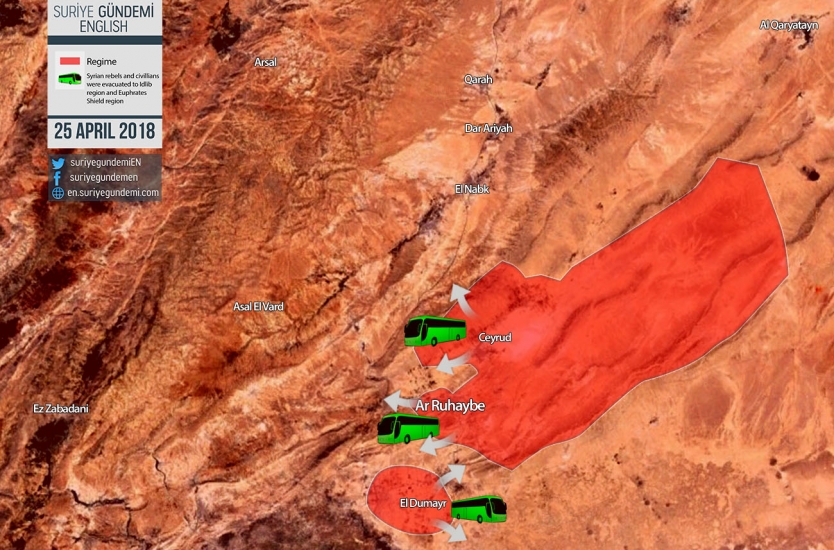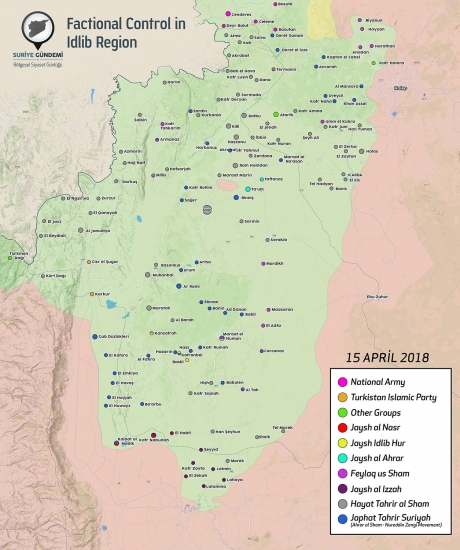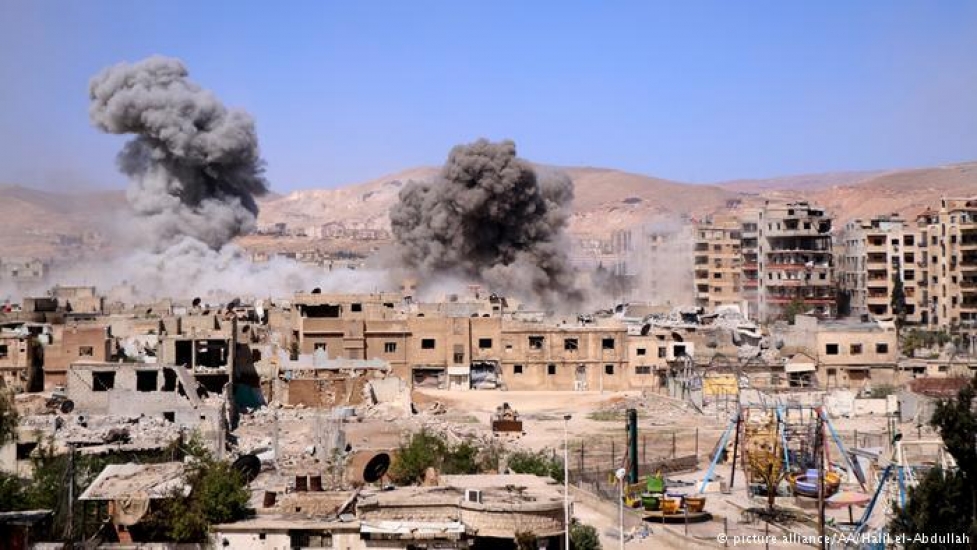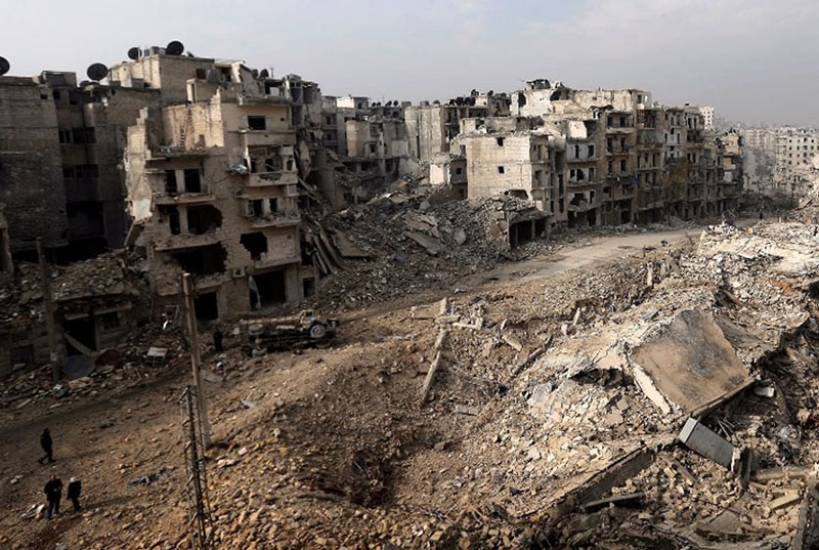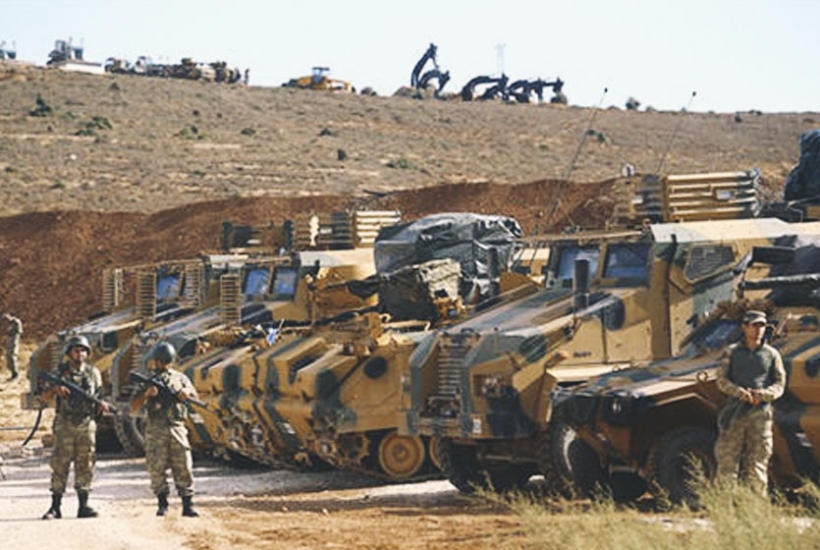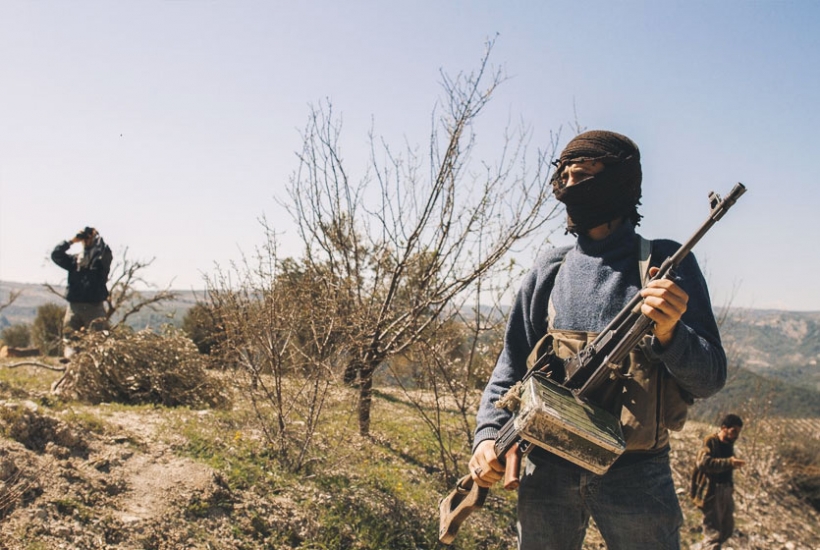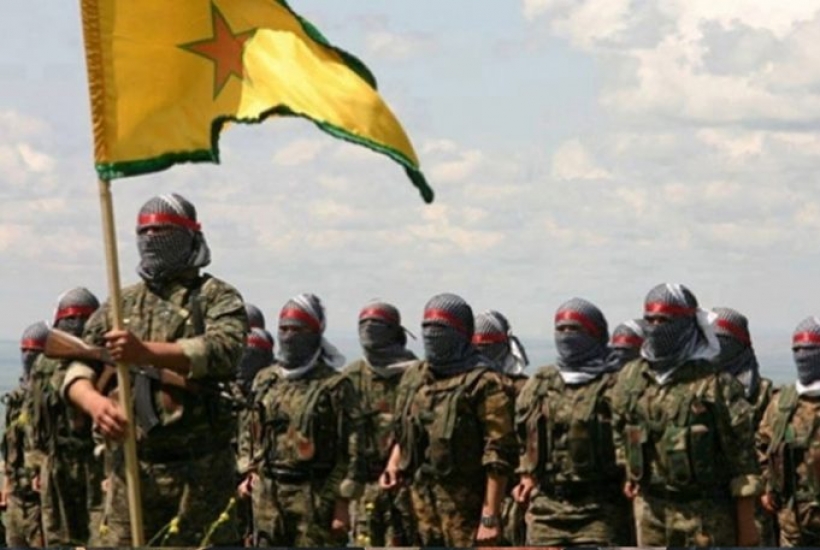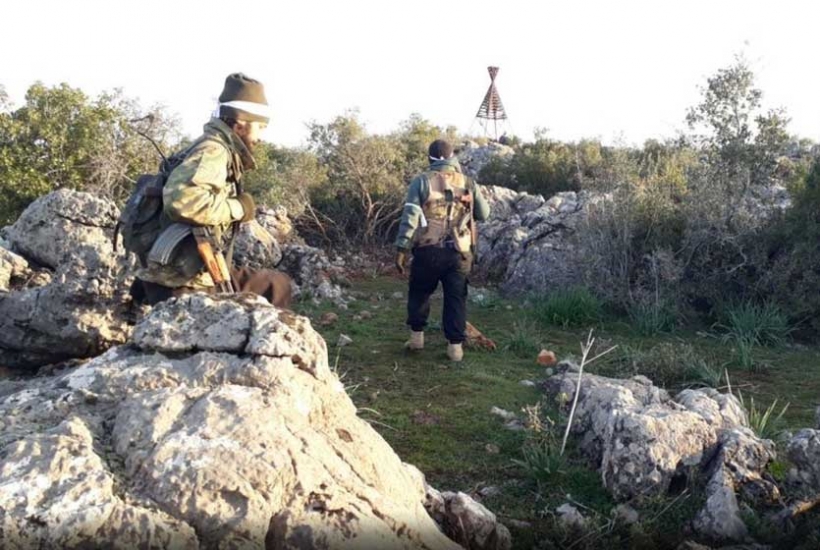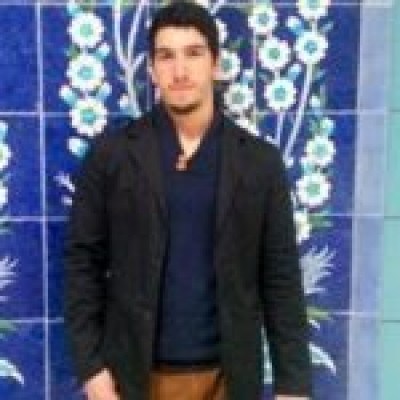Maps
Lates Situation in DeirEzzor Area Between The Regime and YPG/SDF
Lates Situation in DeirEzzor Area Between The Regime and YPG/SDF
Regime is Changing Demographics in Syria
Regime is Changing Demographics in Syria
The Syrian conflict which started in 2011 and has been active ever since, is entering a new stage. With Russia’s entrance to the war, in support of the Assad regime, the regime is gaining ground militarily day by day. The regime is also pursuing demographic policies that aim at increasing control over populations. After the Assad regime’s assertion of control over Eastern Ghouta, the rebels in Eastern Qalamoun have, with Russian mediation, sat at the negotiation table and left the area. Especially Jaish al Islam in Eastern Qalamoun has left a considerable amount of heavy weapons to the regime and left to opposition-controlled territory supervised by Turkey. Together with the fighters, the local population also has been forced to migrate, after which they have entered the opposition-controlled territories of Afrin, Euphrates Shield and Idlib.
Turkish NGO’s and AFAD have set up tent camps at multiple locations to harbor the fleeing Syrian families from Eastern Ghouta and Eastern Qalamoun. They are being provided with humanitarian aid accordingly.
Factional Control in Idlib Region [15 April 2018]
Factional Control in Idlib Region [15 April 2018]
The clashes between Jabhat Tahrir Suriyah (JTS), made up of Ahrar al Sham and Noureddin Zengi, and Hayat Tahrir al Sham (HTS) have started again after the ceasefire which was agreed upon last week and which lasted for only a week. In southern Idlib in particular, HTS has managed to recapture a lot of towns and villages from JTS. One of these locations is Moruk where the Turkish Armed Forces (TAF) has established an
Current power balances in Syria
Current power balances in Syria
After the chemical attack by the Russia and Iran backed Assad regime on Douma in Eastern Ghouta on the 7th of April 2018, 40 civilians have lost their lives and hundreds have been affected. Western countries, and the US in particular, branded the use of these chemical weapons as a red line that should not be crossed, and they responded harshly to the Assad regime. These countries made clear that all options are on the table, including military intervention. While the issue has been carried to the United Nations Security Council, the draft resolution put forward by the US has been vetoed by Russia, while the resolution drafted by the Russians was vetoed by the US, resulting in a deadlock. As a result, the US, the UK and France have shared with the press that they are in intense negotiations, all options are on the table and that includes military intervention.
Before the expected military strikes against the Russia and Iran backed Assad regime; Turkish, Iranian, Russian, French and American military bases, airfields, mobile stations, observation posts and warships in Syria, neighboring countries and the Eastern Mediterranean are shown with details on the map below.
Military Situation and Military Bases in Syria Before Expected US-led Military Strikes
Military Situation and Military Bases in Syria Before Expected US-led Military Strikes
After the chemical attack by the Russia and Iran backed Assad regime on Douma in Eastern Ghouta on the 7th of April 2018, 40 civilians have lost their lives and hundreds have been affected. Western countries, and the US in particular, branded the use of these chemical weapons as a red line that should not be crossed, and they responded harshly to the Assad regime. These countries made clear that all options are on the table, including military intervention. While the issue has been carried to the United Nations Security Council, the draft resolution put forward by the US has been vetoed by Russia, while the resolution drafted by the Russians was vetoed by the US, resulting in a deadlock. As a result, the US, the UK and France have shared with the press that they are in intense negotiations, all options are on the table and that includes military intervention.
Before the expected military strikes in Syria; Turkish, Iranian, Russian, French and American military bases, airfields, mobile stations and observation posts are shown on the map below
The TAF’s new observation post in Idlib: Morek
The TAF’s new observation post in Idlib: Morek
The Astana process, of which Turkey, Russia and Iran are the guarantors, aims at de-escalating the conflict and decreasing the clashes on the Syrian battlefield while laying the groundwork for a political transition process. The de-escalation zone of Idlib is the most prominent among the de-escalation zones which are agreed upon by the guarantors of the Astana process. The 9th observation post in Idlib has been constructed by the TAF as a part of this de-escalation process. The new observation post is in the north of Hama in the area of Morek. Therefore, the observation posts constructed by the TAF are in the following areas: three in Dare’t İzze and the rest in Anadan, El Eys, Tel Tukan, Surman, Zaytunah and Morek. The TAF is expected to construct a total of 12 observation posts in Idlib.
Areas of control of different opposition groups after the start of clashes between JTS and HTS
Areas of control of different opposition groups after the start of clashes between JTS and HTS
The clashes between Hayat Tahrir al Sham (HTS) and Jabhat Tahrir Suriyah (JTS), of which the latter was formed through the merger between Ahrar al Sham and Nureddin Zinki, have led to many towns and villages changing hands. Although there have been 3 ceasefires between the two sides, the cessation of clashes has not been realized. As of April the 7th another ceasefire has been implemented of which the duration is determined as one week. While the clashes continue the Turkish Armed Forces (TAF) continues to construct observation posts and scout for possible locations to construct new observation posts.
TAF Observation Posts in Idlib
The Astana process, of which Turkey, Russia and Iran are the guarantors, aims at de-escalating the conflict and decreasing the clashes on the Syrian battlefield while laying the groundwork for a political transition process. The de-escalation zone of Idlib is the most prominent among the de-escalation zones which are agreed upon by the guarantors of the Astana process. The 8th observation post in Idlib has been constructed by the TAF as a part of this de-escalation process. The new observation post is in the village of Zaytunah in rural Latakia. Therefore, the observation posts constructed by the TAF are in the following areas: three in Dare’t İzze and the rest in Anadan, El Eys, Tel Tukan, Surman and Zaytunah. The TAF is expected to construct a total of 12 observation posts in Idlib.
The 63th day of the Olive Branch Operation
The 63th day of the Olive Branch Operation
The Olive Branch Operation started by the TAF and its rebel allies continues after the capture of Afrin city. On the 63th day of the operation, the city of Afrin and its immediate surroundings are checked for and cleared of boobytraps while the operation continues southward where the villages of Kibarsin, Fafertin, Burcike and Baziher have been captured.
Northern Syria [22.03.2018]
The Latest Situation in Northern Syria [22.03.2018]
After the TAF and its Syrian rebel allies started the Olive Branch Operation to clear Afrin from the YPG, the PYD/YPG has lost any border connection with Turkey in Afrin which means that the PYD/YPG has lost any border connection with Turkey West of the Euphrates river. As the Olive Branch Operation has finished succesfully, Afrin has been cleared from any PKK/YPG presence. According to the statements of Turkish officials, bilateral diplomacy between the US and Turkey on the issue of Manbij continues while Turkey’s decisive behavior in northern Syria might cause new crucial developments as Turkey’s rhetoric signals new military operations not only in Manbij but all the way to the Iraqi border.


